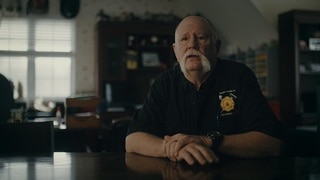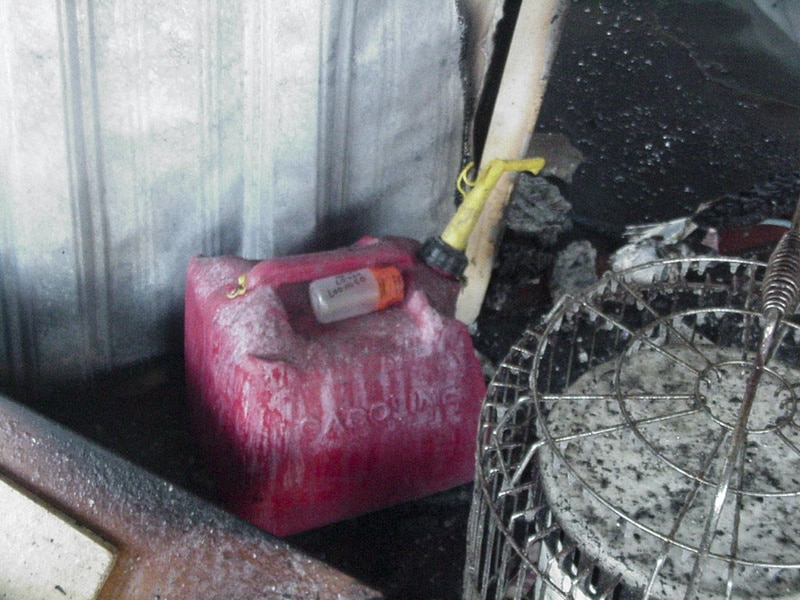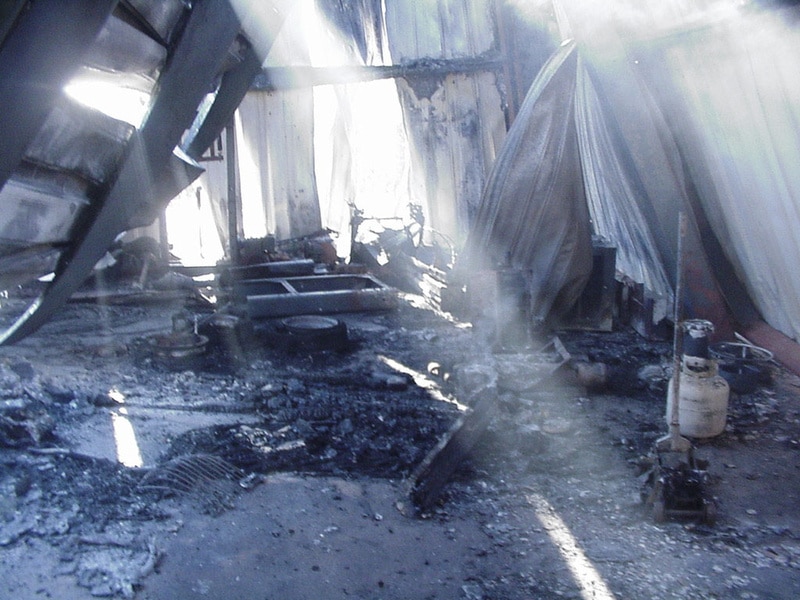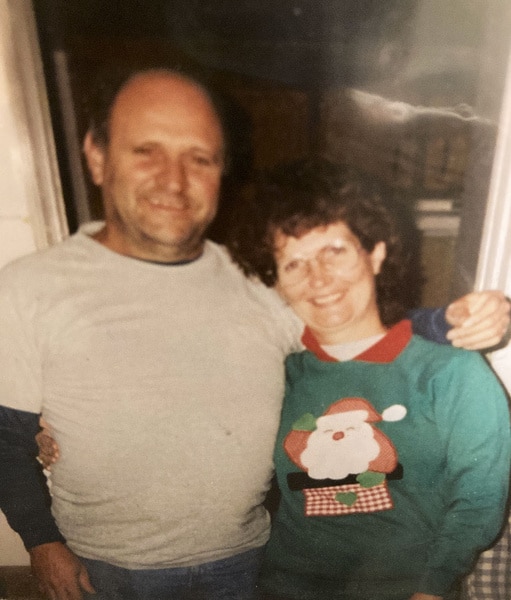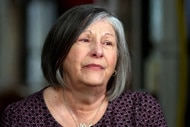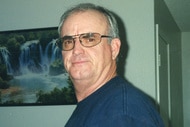Create a free profile to get unlimited access to exclusive videos, breaking news, sweepstakes, and more!
Wife Suspected of Arson After “Watching Husband Burn to Death” in Horrific House Fire
A slew of experts with contradictory theories struggled to solve the mystery on Accident, Suicide, or Murder.
“It was quite horrifying to see a person burnt to that degree,” recalled firefighter Robert Ridgeway. An inferno that scorched through a couple’s Georgia home raised so many questions it left investigators’ heads spinning.
Accident, Suicide, or Murder, airing Saturdays at 8/7c on Oxygen, follows the tragic story of James Long, the 53-year-old victim, and his wife Beverly Jean Long, who escaped the fire nearly unscathed. With evidence burned to a crisp and investigators divided on what happened, expert testimony and police footage became crucial to the case. But twenty years after the verdict, ASM discovered the mysterious fire still haunts the police.
For more in true crime:
Days After Getting Married, Man Dies in Wife's Arms While Defending Her from Serial Killer Intruder
Beloved Teacher Found Slain Right Before Christmas — Who Attacked Her In Broad Daylight?
“He Was Worth More Dead Than Alive”: Woman Hires Brother to Kill Husband for $500K
What happened to James Long?
On January 23, 2003, a frantic Beverly Jean Long called the police to report a fire had ripped through the home she shared with her truck driver husband, James. It was an enormous structure: a converted hangar with a living space upstairs and a sprawling workshop on the ground level, where James stored equipment for his tree-trimming business. That night was freezing in Butts County, Georgia, and James had been filling a kerosene heater with fuel when it exploded, she told police. As flames overtook the workshop, Beverly retreated to her car, where she called 911.
“He was burned really bad. There were some features that were unrecognizable,” remembered Ridgeway, who helped extinguish the fire. “He was burned to the point that you can see bone. That’s indicative of something very hot was involved on the body itself, maybe even an accelerant.”
Jim Greep, who grew up with James in Kansas, was melancholy thinking back on his friend’s demise. “I thought, there goes a good man. Everyone called him Jim. He was just that kind of guy. Always working on the farm, helping out the family," Greep said.
The fire scene was chaotic, with tree-trimming equipment, lawnmowers, random tools, and gas cans scattered throughout the workshop. James' body was found alongside three hammers. “The first thing the coroner noticed was he was lying on his back in a supine position. His arms were stretched up above his head,” said Ridgeway. It was a bizarre pose, he noted, as most fire victims curl into a protective fetal position.
The firefighter believed he was either thrown that way or dragged. First responders also spotted signs of a “pour pattern” from the body to the door, suggesting he was doused with fuel. “Pour pattern is where you would pour gasoline, kerosene, some kind of accelerant and light it off, and you would see a distinct pattern of where that liquid was on the floor,” Ridgeway explained.
Signs point to Beverly Long's guilt
Police immediately poked holes in Beverly’s story, and she became the primary suspect. That night, she suffered an abrasion on her chin and had blood on her lips, but had no burns or evidence of smoke inhalation. Notably, to police, she was not crying at the scene of the fire. “She didn’t seem to be overwhelmed with grief or concern,” Chief Rod Demery, a retired homicide detective, told Accident, Suicide or Murder. However, that could be attributed to trauma and shock.
When police pulled Beverly in for questioning, she cracked under pressure and began contradicting little details of her story. Police footage on Accident, Suicide, or Murder shows the petite woman scrambling to get details straight and speaking in a shaky voice. She failed a polygraph test twice. “I notice you’re not crying, and I was just curious if you’re in pain?” asked the investigator, referencing her chin abrasion.
When asked if James punched her in the mouth before he died, she denied it. Investigators didn’t believe Beverly would have the strength to overpower her husband, but could she be protecting the murderer?
The Mysterious Frank Howard
As fire investigator Ken Wright combed the workshop for clues, a neighbor named Frank Howard popped up. He identified himself as a close friend of the couple, and said that his son was married to James’ daughter.
Howard spoke of James’ careless behavior in the workshop and how James often made the dangerous mistake of putting kerosene in gasoline cans. “The problem is the kerosene would not burn with the same fire behavior as gasoline. As soon as gasoline is introduced to an appliance that has an open flame, it’s going to explode,” explained Wright.
Howard admitted that he had borrowed one of the kerosene cans but had returned it full of gasoline — providing a plausible explanation for the fire. But Howard kept showing up to ask the police “bold” questions. He claimed that James had been abusive to Beverly and said she planned on leaving him. Before police could get to the bottom of it, Howard tragically committed suicide a month after the fire. In his cryptic suicide note, he wrote, “I’m sorry.”
RELATED: Married Father Kills Business Partner as Part of "Diabolical" Scheme
“It made him look at least partially responsible for the murder of James. Why would he say that?” asked Wright. “The only reason in my mind is that he filled a can with gasoline and brought it back.”
The autopsy results held a few surprises. James had suffered multiple rib and skull fractures yet had minor smoke inhalation. “Most people who die in fires die of smoke inhalation as opposed to the actual flame,” noted Wright.
Months later, in June, a forensic anthropologist determined that James suffered blunt force trauma to the skull and not injury from the heat. In October, there was finally a ruling on the cause of death: thermal injuries and blunt force head injuries. The manner of death? Homicide.
Beverly was indicted for murder and put on trial in May 2004.
New evidence points to Beverly Long's innocence
During his investigation of the fire scene, Wright found gasoline in the smudge pot reservoir, bolstering the theory that James had made a careless and dangerous mix-up, as neighbor Frank Howard said. He also noted, “There are occasions in which you will find that bones will fracture from the fire itself. It is possible that the skull cracked from the heat of the fire.”
As for the theory that James was doused in gasoline, the Georgia Bureau of Investigation analysis found no flammable liquids on James’ clothes. Further, the fire marshal’s office determined that there were no pour patterns near his body. Ultimately, fire investigator Ken Wright said it was highly unlikely James was set aflame, and he believed his death was accidental.

Beverly’s criminal defense attorney, Barbara Moon, described to Accident, Suicide, or Murder how she “fell for” her client.
“She’s just looked so fragile, she’d never been arrested, totally unfamiliar with the process," Moon said. "She told me her side of it, and it was very believable. I’m sure the trauma had an impact on the polygraph. They’re not scientifically reliable. I don’t give that a lot of weight.”
Expert testimony and video sway the jury
An arson expert testified at the trial that the fire spread rapidly because of the detritus in the hangar, “like a domino effect,” said Moon. Beverly quickly retreated after the explosion, preventing any serious injuries or smoke damage to her lungs, and the inconsistencies in her recollection were attributed to her shocked state.
A “very significant” moment at trial came from an unexpected source. Moon showed the jurors the video of Beverly’s police interrogation, where she was criticized for not crying. But after the officer left her alone in the room, she completely broke down, crying, “Oh God, help me. Help me to explain to them. You know I didn’t do this.”
“She just was very alone, very lost, very sad, and it was a very powerful moment,” said Moon, who made the risky decision to put her client on the stand at trial. With all “eyes glued to her,” Beverly relived the trauma of "watching her husband burn to death. It takes a lot of courage,” stated Moon.
She was found not guilty on all counts.
But as Chief Demery put it, Frank Howard’s “over-involvement” in the case was never explained, and to this day, some police are divided on what really happened that night in the hangar.
